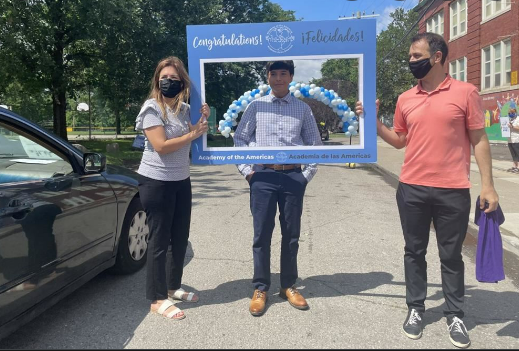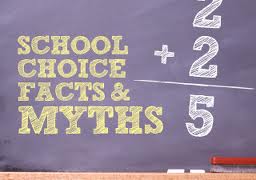
Academy of the Americas is a public pre-kindergarten through high school of Detroit Public Schools, with its primary school campus located in the former St. Hedwig School in southwest Detroit. It offers a Spanish-English bilingual program.
Editor’s note: This article appeared last week on thecentersquare.com.
Hispanic parents nationally are increasingly investigating alternatives to traditional public schools, according to a survey released this week by Conoce tus Opciones Escolares.
COE reported 59% of Hispanic parents surveyed responded they were considering other education options for at least one child from each family, whereas 52% of all parents – Hispanic and otherwise – responded likewise.
COE describes itself as a sister project of the National School Choice Awareness Foundation. Krissia Campos Spivey, COE project director, told The Center Square the dropout rate for Hispanic students is 65% higher than it is for white students. She added the pandemic only served to exacerbate education issues for minority students as well as for students of every race.
“The last two years have made the racial achievement gap even worse,” Spivey said.
Other statistics supporting Spivey’s assertion include Michigan’s most recent M-STEP scores, which reveal only 9% of Detroit third graders tested last spring are reading at or above grade level. Out of 3,722 students, 910 (24%) were deemed eligible for third-grade retention, but only 107 – less than 3% – were actually held back. Statewide, 5,700 students (5.8%) were eligible for third-grade retention, up from 4.8% prior to the pandemic.
COE surveyed 1,228 Hispanic or Latino parents of children between the ages of 5 and 18. Nineteen questions were asked, prompting 49% of respondents to say they were considering switching to nontraditional schools due to their students’ learning disruptions as a result of the pandemic; 56% responded they desired a higher quality of education for their children; 49% noted their concerns over bullying and school safety; and 24% answered they had concerns over school curriculum.
To continue reading, click here.
 The assertion that school choice somehow exacerbates segregation and separatism in American society surprises me every time it pops up. The ideal of traditional public education, a “common school” available equally at no cost to all citizens to impart a high level of academics as well as a core set of American values, has always been a myth. Yet it has amazing staying power despite the facts.
The assertion that school choice somehow exacerbates segregation and separatism in American society surprises me every time it pops up. The ideal of traditional public education, a “common school” available equally at no cost to all citizens to impart a high level of academics as well as a core set of American values, has always been a myth. Yet it has amazing staying power despite the facts.
Put aside a hundred years of state-sanctioned racism that outlawed education for slaves, and then engendered “separate, but equal” schools for another 90 years until the 1954 Supreme Court decision banned the practice. Let’s look at how this “common school” system serves Americans now.
The statistics on K-12 education in the Department of Education’s "The Condition of Education, 2011" report are informative. Nationally, 31 percent of African-American students are in schools that have 75 percent or more African-American students. The figure is nearly 33 percent for Hispanic students. Nationally, 62 percent of whites attend a school with a population over 75 percent white, while those schools serve around 7 percent of the African-American and Hispanic populations.
When city demographics are analyzed, the segregation of traditional public schools dramatically jumps. Forty-two percent of African-Americans and 39 percent of Hispanics are in schools with 75 percent or more of those same students. Not surprisingly, school enrollment and especially urban school enrollment reflects how a public education monopoly assigns students to schools - by zip codes.
Another way to look at how this “common school” system is serving us is the distribution of the free and reduced lunch (FRL) population, which the Department of Education identifies as a proxy for low-income students. High-poverty elementary schools, those with 75 percent or more of an FRL population, enroll 45 percent of Hispanic students and 44 percent of African-American students. For whites, the enrollment is 6 percent in high-poverty schools. Nationally, urban areas account for 29 percent of our student population, yet 58 percent of all students in high-poverty schools live in our cities.
Combine this data with dropout statistics in the 40-60 percent range for inner-city minority populations, and abysmal academic outcomes for so many of the remaining students, and you have the “common school” myth stripped bare. (more…)